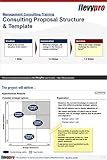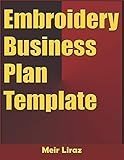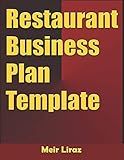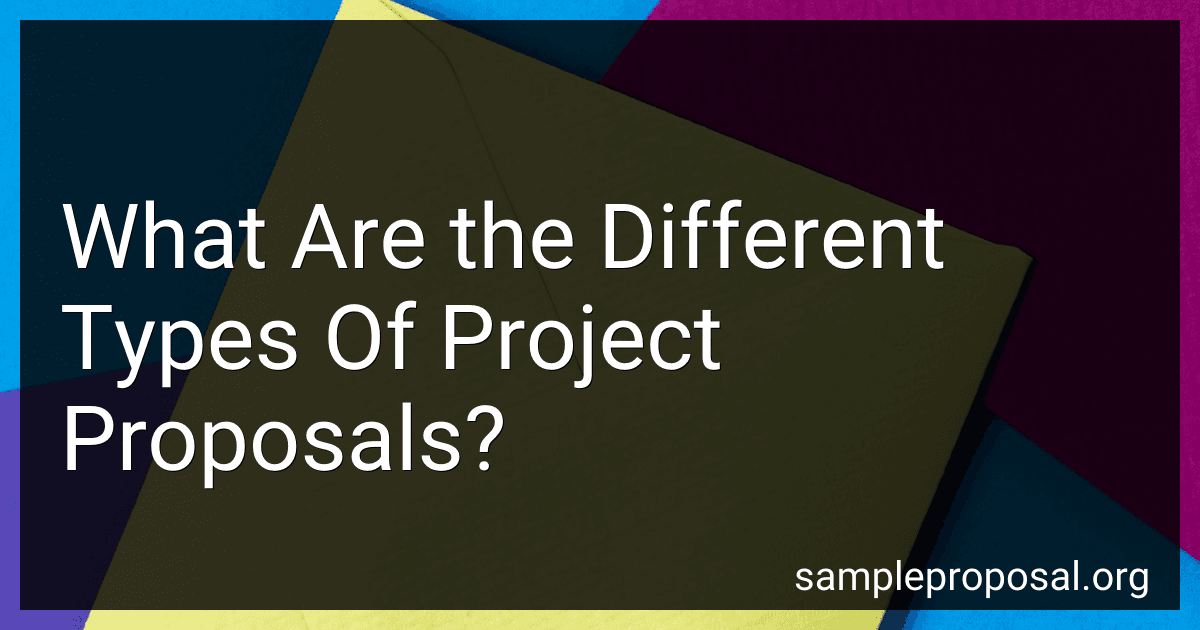Best Project Proposal Templates to Buy in December 2025

Writing Proposals: A Handbook of What Makes your Project Right for Funding (includes proposal template)



Business Plan Template: Complete Fill in the Blanks Sample Business Plan Proposal (With MS Word Version, Excel Spreadsheets, and 7 Free Gifts)



Write a Winning Research Proposal: How to Generate Grant Ideas and Secure Funding Using Research Project Canvas (Peer Recognized)



Management Consulting Proposal Structure & Template: Business Presentation



Embroidery Business Plan Template



Writing a Nonprofit Grant Proposal: A Guide in Writing Winning Proposals that will Help You Get Funds for Your Plans and Projects



The Beginner's Guide to Grant Writing: Tips, Tools, & Templates to Write Winning Grants



Grant Writing: The Most Up-To-Date Guide to Finding the Best Funding Sources from Online Databases, Writing Grant Proposals That Get Noticed, and Getting Funding for Your Projects



Starting A Trucking Business: Complete Business Plan Template



Restaurant Business Plan Template


There are several different types of project proposals that can be used depending on the specific goals and requirements of the project. Some common types of project proposals include solicited proposals, unsolicited proposals, continuation proposals, renewal proposals, and internal proposals.
Solicited proposals are those that are requested by a client or organization, often in response to a formal request for proposal (RFP). Unsolicited proposals, on the other hand, are submitted without a specific request and are used to pitch an idea or project to a potential client or stakeholder.
Continuation proposals are submitted to secure funding for ongoing projects, while renewal proposals are used to request additional funding for projects that have already received initial funding. Internal proposals are submitted within an organization to propose new projects, initiatives, or changes to existing processes.
Each type of project proposal serves a different purpose and requires a unique approach in terms of content, structure, and presentation. It is important to carefully consider the specific requirements and expectations of the recipient when selecting the appropriate type of proposal for a given project.
What is the difference between a formal and informal project proposal?
Formal project proposals are typically detailed, comprehensive documents that are structured in a specific format, including sections such as an executive summary, project objectives, methodology, timeline, budget, and evaluation plan. They are typically written for larger projects that require significant planning and coordination.
Informal project proposals, on the other hand, are typically less structured and detailed. They may be used for smaller projects or initiatives that do not require as much planning or documentation. They may be written in a more casual tone and may not follow a specific format.
In general, formal project proposals are more detailed, structured, and comprehensive, while informal project proposals are more concise and less detailed. Formal project proposals are typically used for larger, more complex projects, while informal project proposals are used for smaller, simpler projects.
How to make a project proposal stand out?
- Clearly define the problem or opportunity: Clearly articulate the problem or opportunity that the project aims to address. Provide evidence and data to support your claims.
- Highlight the uniqueness of your approach: Explain how your project proposal offers a unique or innovative solution to the problem or opportunity. Emphasize what sets your project apart from others.
- Show impact and benefits: Clearly outline the potential impact and benefits of your project proposal. Explain how it will create value for stakeholders, communities, or the organization.
- Demonstrate feasibility and sustainability: Provide a detailed plan on how the project will be implemented, including timelines, resources required, and potential risks. Show that the project is feasible and sustainable in the long term.
- Showcase your team’s expertise: Highlight the qualifications and expertise of your team members or collaborators. Show how their skills and experience align with the project goals.
- Use visuals and multimedia: Use visuals, graphics, and multimedia elements to make your project proposal more engaging and visually appealing. This can help to communicate complex ideas more effectively.
- Tailor the proposal to the audience: Customize your project proposal to the needs and preferences of the audience you are presenting to. Show that you understand their priorities and concerns.
- Provide clear and concise information: Make sure your project proposal is well-organized, easy to read, and clearly communicates key information. Avoid jargon and unnecessary technical details.
- Include a compelling executive summary: Start your project proposal with a compelling executive summary that summarizes the key points and benefits of the project. This will grab the attention of the readers and encourage them to read further.
- Seek feedback and make improvements: Before submitting your project proposal, seek feedback from colleagues, mentors, or other stakeholders. Use their input to make improvements and ensure that your proposal stands out.
What is the scope of a project proposal?
The scope of a project proposal outlines the specific objectives, deliverables, and activities that will be carried out as part of the project. It details the goals and purpose of the project, as well as the scope of work to be completed, timelines, resources required, budget, and potential risks and constraints. The scope also defines the boundaries of the project, including what is included and excluded from the project. It provides a clear understanding of what will be achieved and how it will be accomplished, serving as a guide for all stakeholders involved in the project.
How to organize information in a project proposal?
- Cover Page: Include the project title, organization name, date, and contact information.
- Executive Summary: Provide a brief overview of the project, including its objectives, benefits, and key stakeholders.
- Introduction: Introduce the project and provide background information, such as the problem or opportunity the project aims to address.
- Project Description: Provide a detailed description of the project, including its scope, objectives, methodology, and timeline.
- Goals and Objectives: Clearly state the goals and objectives of the project, specifying what you hope to achieve and how success will be measured.
- Needs Assessment: Describe the need for the project, including any relevant data or information that supports the project's importance.
- Budget and Funding: Outline the budget for the project, including estimated costs and sources of funding.
- Implementation Plan: Provide a detailed plan for how the project will be implemented, including key activities, milestones, and responsible parties.
- Evaluation Plan: Describe how the project will be evaluated and measured, including criteria for success and methods for monitoring progress.
- Sustainability Plan: Explain how the project will be sustained over time, including any long-term funding or resources needed.
- Appendices: Include any additional supporting documents or information, such as resumes of key personnel, letters of support, or relevant research studies.
What is included in a project proposal?
A project proposal typically includes the following elements:
- Title: The title should be concise and clearly convey the purpose of the project.
- Executive Summary: This section provides a brief overview of the project, including the problem being addressed, the proposed solution, and the expected outcomes.
- Background: This section provides context for the project, including information about the problem or opportunity being addressed, relevant research or data, and any previous work that has been done in this area.
- Objectives: The objectives of the project should be clearly stated, outlining what the project aims to achieve and how success will be measured.
- Methodology: This section outlines the approach that will be taken to carry out the project, including the activities that will be undertaken, the timeline for completion, and the resources required.
- Budget: A detailed budget should be included, outlining the costs associated with the project and how funds will be allocated.
- Evaluation Plan: This section should outline how the success of the project will be evaluated, including the metrics that will be used to measure outcomes.
- Sustainability Plan: This section outlines how the project will be sustained after completion, including any plans for ongoing maintenance, support, or further development.
- Conclusion: The conclusion should summarize the key points of the proposal and reiterate the importance and potential impact of the project.
- Appendices: Any additional supporting documents, such as research studies, letters of support, or resumes of key personnel, can be included in the appendices.
How to structure a project proposal?
Writing a project proposal can be crucial for securing funding and resources for your project. Here are some steps to help you structure a project proposal effectively:
- Title Page: Include the title of your project, your name, organization, and contact information.
- Executive Summary: This is a brief overview of your project, including the problem statement, objectives, methodology, and budget. It should be concise and compelling to grab the reader's attention.
- Introduction: Provide background information on the project, including the problem you are addressing and the significance of the project.
- Objectives: Clearly state the goals and objectives of the project. Make sure they are specific, measurable, achievable, relevant, and time-bound (SMART).
- Methodology: Describe the approach and methods you will use to achieve the project objectives. Include timelines, milestones, and a detailed project plan.
- Budget: Provide a detailed budget for the project, including all costs associated with the project such as personnel, equipment, materials, and overhead expenses.
- Evaluation Plan: Outline how you will monitor and evaluate the project to assess its impact and success. Include key performance indicators (KPIs) and metrics to track progress.
- Sustainability Plan: Explain how the project will be sustained beyond the initial funding period. Include plans for securing ongoing funding, partnerships, or other resources.
- Conclusion: Summarize the key points of your proposal and reiterate the importance and potential impact of the project.
- Appendices: Include any additional supporting documents such as resumes of key personnel, letters of support, and supplementary data.
Remember to tailor your project proposal to the requirements of the funding organization or audience you are submitting it to. Make sure to follow any specific guidelines or instructions provided and to proofread your proposal carefully before submitting it.
